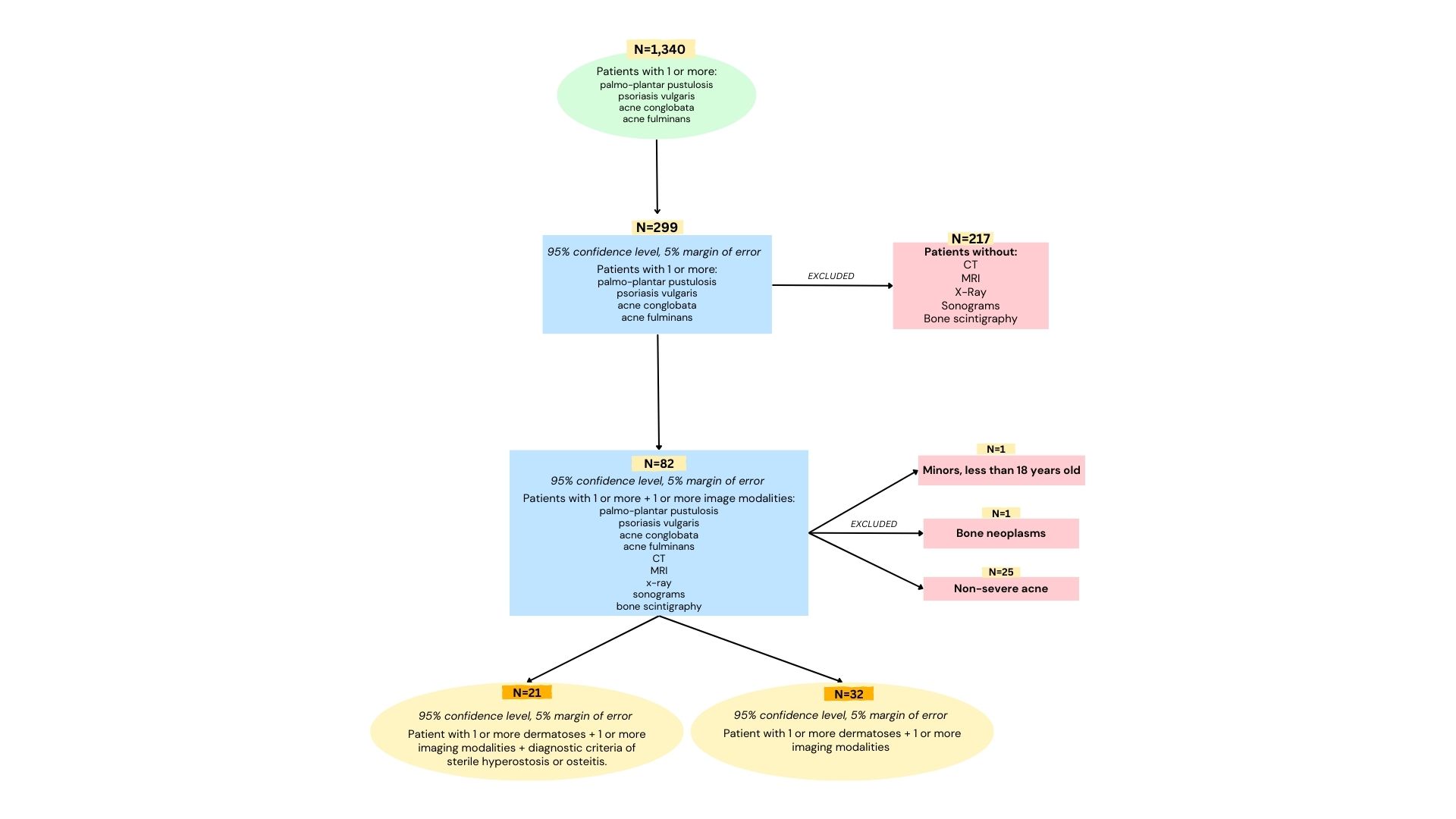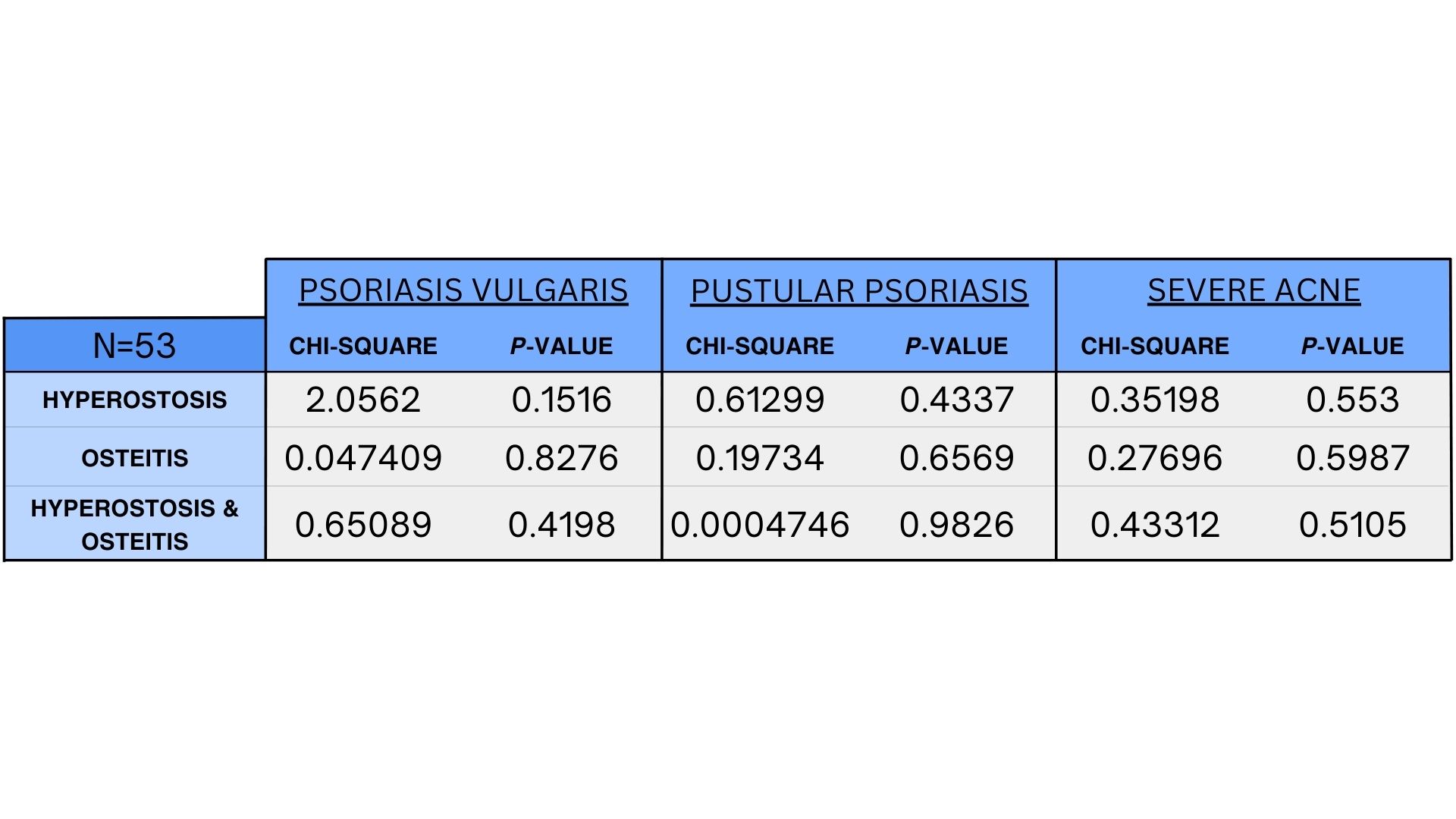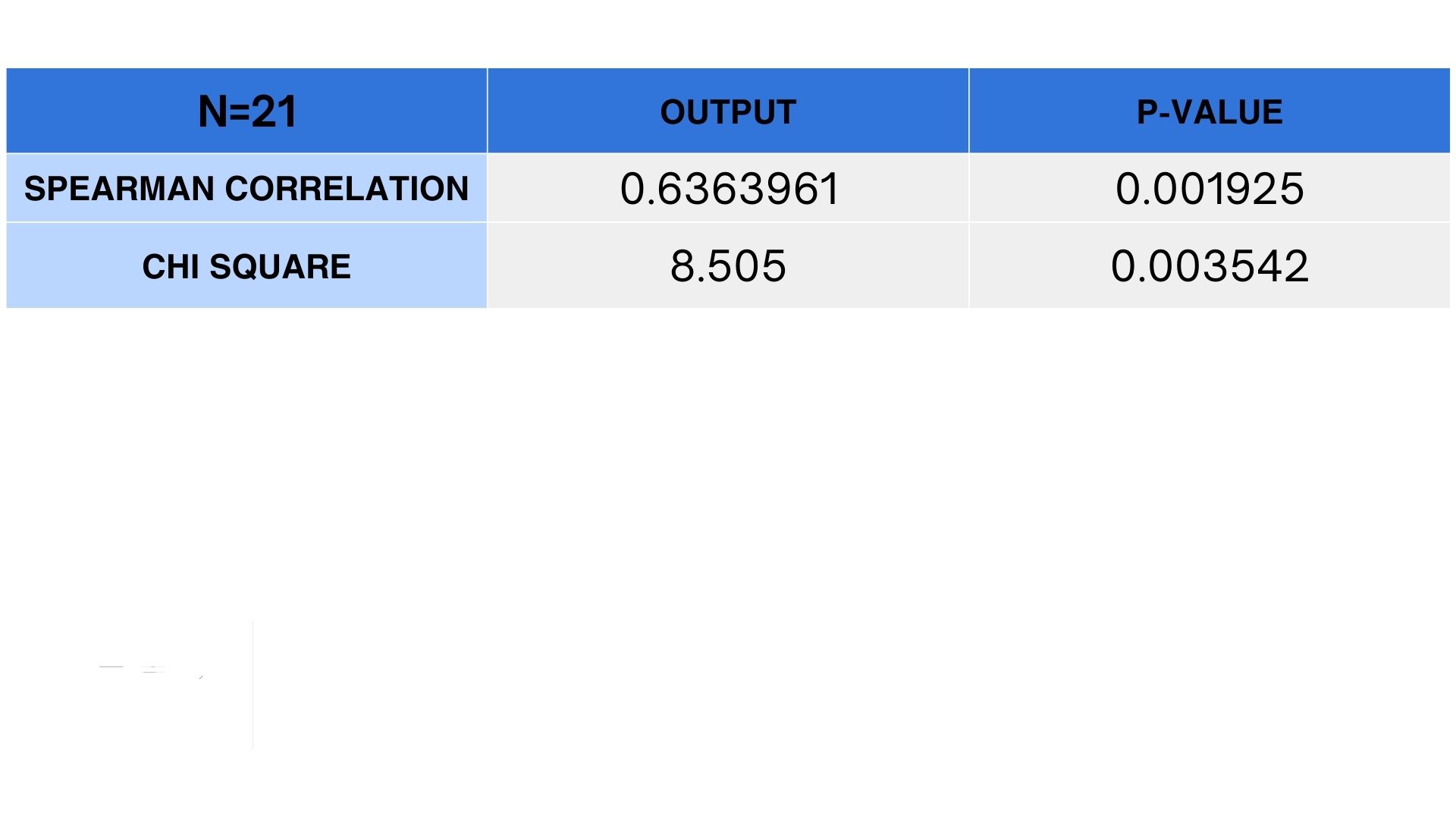Session Information
Date: Monday, November 13, 2023
Title: (1124–1154) Miscellaneous Rheumatic & Inflammatory Diseases Poster II
Session Type: Poster Session B
Session Time: 9:00AM-11:00AM
Background/Purpose: SAPHO syndrome is a rare chronic inflammatory condition that affects the skin and osteoarticular structures. Despite being first described over 30 years ago, it remains poorly recognized in clinical practice. This study aims to comprehensively update and analyze the disease in the Dominican Republic to improve diagnosis. It dissects the sociodemographic characteristics, preferred diagnostic imaging modalities, and detailed descriptions of bone and skin lesions in the first diagnosed patients. Furthermore, this study is noteworthy for being the first to explore a correlation between dermatological and imaging findings and their interdependence.
Methods: This retrospective study reviewed electronic medical records from 2015 to 2022 to identify patients with skin conditions related to acne and psoriasis. Patients who met Kanh’s and Benhamou’s criteria for SAPHO syndrome, identified through imaging studies, were included in the sample population. Data on sociodemographics, comorbidities, laboratory tests, and imaging findings were collected and analyzed. Spearman correlations and chi-square tests were calculated along with their corresponding P values using Rstudio, with a significance level of p< 0.05 considered statistically significant.
Results: Among the patients reviewed, 21 of 1,340 (1.5%) met the criteria and were diagnosed with SAPHO syndrome, with a majority being females (71%). Laboratory tests, including ESR, C-reactive protein, C3, and C4, were not determining factors for diagnosis. MRI and X-ray (48%) were the preferred diagnostic tools for the disease, with sonography (10%) emerging as an alternative option for younger patients. The study identified hyperostosis (52%), osteitis (29%), and arthritis (19%) as common osteoarticular manifestations, with the dorsal column being the most commonly affected bone (82%). The most common dermatoses were severe acne (57%) and psoriasis vulgaris (29%), which commonly affected the face (62%), thorax (33%), scalp (24%), extremities (19%), back (19%), and palmoplantar region (5%). Most patients displayed one or two affected skin areas.
Conclusion: SAPHO syndrome requires a multidisciplinary approach involving rheumatologists, dermatologists, and radiologists, who rely on clinical and imaging findings for an accurate diagnosis. The disease is commonly seen in females aged 34-38, and the preferred imaging modalities for diagnosis were MRI and X-ray. This study found that severe acne exhibited the highest percentage of radiological findings. However, no significant correlation was observed between dermatological and radiological variables within our sample, indicating the independence of each variable from the other. We also investigated a possible correlation between affected bone areas and areas affected by dermatoses, uncovering a positive correlation between dermatoses of the extremities and palmoplantar region with radiological findings on the long bones and the pelvis. The results of this study, representing the first investigation of this topic in the Dominican Republic, hold the potential to enhance diagnostic strategies and provide valuable statistical data for both local and global understanding of SAPHO syndrome.
To cite this abstract in AMA style:
Maletta L, Jimenez D, de Jesus R. From Skin to Bone Lesions: A Pioneer Study Unraveling the Underdiagnosis of SAPHO Syndrome in the Dominican Republic [abstract]. Arthritis Rheumatol. 2023; 75 (suppl 9). https://acrabstracts.org/abstract/from-skin-to-bone-lesions-a-pioneer-study-unraveling-the-underdiagnosis-of-sapho-syndrome-in-the-dominican-republic/. Accessed .« Back to ACR Convergence 2023
ACR Meeting Abstracts - https://acrabstracts.org/abstract/from-skin-to-bone-lesions-a-pioneer-study-unraveling-the-underdiagnosis-of-sapho-syndrome-in-the-dominican-republic/



